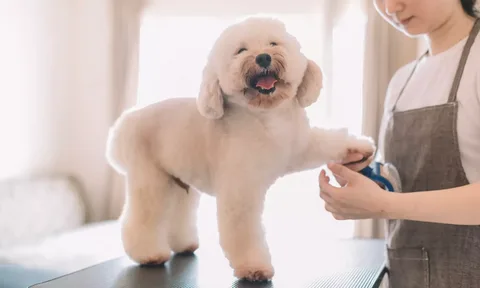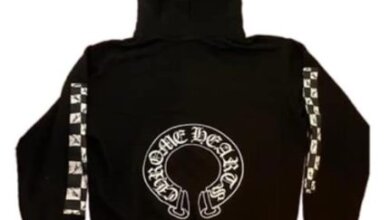
Dog Coat Types and Grooming: Everything You Need to Know
As a dog parent, you know your furry friend deserves the very best. Whether they’re bounding through the park or curled up at your feet, one thing’s for sure—your pup’s coat needs care and attention. From sleek and short to curly and fluffy, dog coat types and grooming go hand in hand in maintaining your dog’s health, hygiene, and overall happiness.
In this comprehensive guide, we’ll explore the different types of dog coats, how to care for each one, and how Mobile Dog Grooming Services can make grooming more convenient than ever.
Why Dog Grooming Matters
Grooming isn’t just about making your dog look good—it’s about keeping them healthy. Regular grooming helps prevent:
- Skin infections
- Matting and tangles
- Excessive shedding
- Ear infections
- Flea and tick infestations
It also allows you to check for lumps, rashes, or abnormalities early on. And for many dogs, grooming can actually be a relaxing, bonding experience when done right.
Understanding Dog Coat Types
Dogs come in all shapes and sizes, and so do their coats. Each coat type has specific needs, so knowing which one your dog has is the first step in developing a proper grooming routine.
1. Smooth Coat
Examples: Beagle, Boxer, Dalmatian
Smooth-coated dogs have short, sleek fur that lies close to the skin. These coats are generally low-maintenance and require minimal grooming, but that doesn’t mean you can ignore them altogether.
Grooming Needs:
- Weekly brushing with a soft bristle brush or rubber mitt
- Occasional baths
- Regular nail trimming and ear cleaning
Tip: Use a grooming mitt during brushing to help stimulate natural oils and keep the coat shiny.
2. Double Coat
Examples: Siberian Husky, German Shepherd, Golden Retriever
A double coat consists of a soft undercoat and a coarser topcoat. These dogs tend to “blow” their coat seasonally, shedding large amounts of hair.
Grooming Needs:
- Brushing 2–3 times a week (daily during shedding season)
- Use undercoat rakes and slicker brushes
- Professional grooming every few months
Tip: Never shave a double-coated dog—it disrupts their natural temperature regulation.
3. Curly or Wavy Coat
Examples: Poodle, Bichon Frise, Labradoodle
These coats are soft, dense, and prone to matting. Regular grooming is absolutely essential to keep them healthy and manageable.
Grooming Needs:
- Brushing 3–4 times a week
- Professional grooming every 4–6 weeks
- Regular ear cleaning (curly coats often trap moisture)
Tip: Always keep a detangling spray handy when brushing curly coats to avoid breakage and discomfort.
4. Wire Coat
Examples: Schnauzer, Wire Fox Terrier, Irish Wolfhound
Wire-coated dogs have a rough, bristly texture that repels dirt and moisture. Their coat requires a grooming technique called “hand-stripping” to maintain its texture and prevent overgrowth.
Grooming Needs:
- Brushing once or twice a week
- Professional hand-stripping or clipping every few months
- Regular facial hair trims (especially around the eyes)
Tip: Not all groomers offer hand-stripping, so make sure to find one who specializes in wire-haired breeds.
5. Long Coat
Examples: Shih Tzu, Yorkshire Terrier, Afghan Hound
Long coats are beautiful but require a lot of upkeep. They are prone to tangling, matting, and picking up debris from walks and playtime.
Grooming Needs:
- Daily brushing
- Monthly trims and baths
- Eye and ear cleaning (especially for hair that grows around these areas)
Tip: If you don’t have time for daily maintenance, consider a “puppy cut” to keep the coat shorter and more manageable.
Mobile Dog Grooming Services: A Convenient Option
Grooming a dog regularly can be time-consuming, especially for those with busy schedules or pups that hate car rides. That’s where Mobile Dog Grooming Services come in—offering professional grooming right at your doorstep.
Here’s why mobile grooming is a great choice:
- Less Stress: No noisy salons or other pets around
- Time-Saving: No need to drive or wait—groomers come to you
- Personalized Service: One-on-one attention ensures your dog gets customized care
- Perfect for Anxious Dogs: Familiar surroundings make the process more calming
Whether your dog has a curly, long, or double coat, mobile groomers are equipped to handle all dog coat types and grooming needs with expertise and care.
Grooming Frequency Guide by Coat Type
| Coat Type | Brushing | Professional Grooming |
| Smooth Coat | 1x per week | Every 2–3 months |
| Double Coat | 2–3x per week | Every 3–4 months |
| Curly/Wavy Coat | 3–4x per week | Every 4–6 weeks |
| Wire Coat | 1–2x per week | Every 2–3 months (hand-strip) |
| Long Coat | Daily | Every 4–6 weeks |
Final Thoughts
Taking care of your dog’s coat isn’t just a beauty routine—it’s a health necessity. Different dog coat types and grooming routines require different tools, techniques, and frequencies. By understanding your pup’s unique coat type, you can create a grooming routine that keeps them clean, comfortable, and healthy. Global for all.
And remember, you don’t have to do it alone. With the help of Mobile Dog Grooming Services, you can ensure your pet gets the expert care they need without disrupting your busy schedule.
Grooming is love—and your dog will thank you for it with every tail wag and happy bark.




